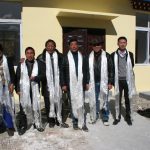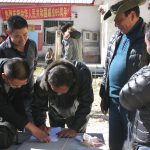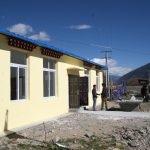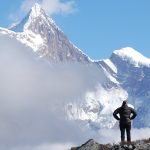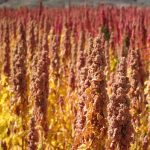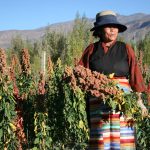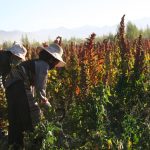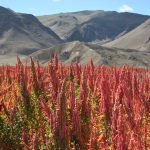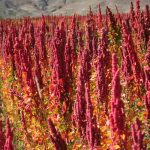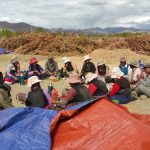Furthermore, these conditions are increasingly exacerbated by climate change, in many places leading to vanishing glaciers – with less water for millions of people and their crops in the future.
Plateau Perspectives’ charters already recognize and support the need for us to respond to desperate situations as they arise, under the broad umbrella of emergency aid or relief. In the past, we have helped alleviate people’s suffering and rebuild livelihoods in the aftermath of extreme snowstorms on the Tibetan plateau and following the Yushu earthquake in April 2010. Now, as we expand our area of work and include remote mountainous regions of Central Asia, we also face situations of drought and of environment and/or human-induced insecurity and conflict. In Afghanistan alone, for example, many 100,000s of people are now refugees, with BBC News and Norwegian Refugee Council reporting that more people are now displaced by drought than by the Taliban.
Emergency relief may be needed to help alleviate people’s immediate suffering or to aid in their recovery with support for enhanced livelihoods that promote resilience for the future. Most often, such support is directed toward people residing in the target mountain regions. Sometimes, however, people have had to flee and are now refugees from conflict/insecurity or from environmental degradation, as a matter of survival. As emergency situations arise and financial resources allow, Plateau Perspectives is ready to respond with aid in various forms, financially or in-kind. For this purpose, a designated ’emergency fund’ has been created, with the aim to enable us to respond in timely fashion to emergency situations as they arise, including support to people affected by natural disasters and assisting individuals and families who have had to flee their home due to disaster or crisis.
Built in 2014, this community health centre is situated in Nyingchi Prefecture on the shore of the Yarlung Tsangpo River. Not far from Langduo village, this mighty river enters the Grand Canyon of Tibet – more than twice as deep as the Grand Canyon in the USA – and carves through the Himalayas, dropping from the Tibetan plateau down into the tropical zones of South Asia where it is better known as the Brahmaputra River. The great landscapes of eastern Tibet are amongst the most extraordinary in the world, exhibiting rich natural and cultural heritages.
Health care in this region, however, remains extremely poor. The construction of Langduo village clinic, with its good facilities and equipment and with additional training planned for the clinic doctors, is now contributing to enhanced community wellbeing. Most funds for this clinic were collected in memory of Mrs Jane M Torrance – first wife of Rev Prof Alan Torrance, chairman of Plateau Perspectives Scotland. This medical centre is now known and appreciated by the community as the Langduo Village ‘Jane Torrance Memorial’ Clinic.
Namche Barwa Mountain
Yarlung Tsangpo Grand Canyon
For several years, crop breeding specialist (and Plateau Perspectives’ China director) Prof Gongbo Tashi has been carrying out agricultural experiments with Quinoa, a grain crop grown primarily for its edible seeds. Over 260 households and 300 farmers have received training in a farmer field school, and at least 37 varieties of quinoa have been tested in arid lands in Lhatse county. With co-financing from the provincial government and from the Canada Fund for Local Initiatives, and working in collaboration with Tibet University’s Agriculture Department, 183 hectares are planted in a study design aiming to determine optimal quinoa varieties and growing conditions. Product development for food markets also is now underway with several national companies.
Participatory Rural Appraisal (PRA) training for development also has been provided for government staff from the agriculture, animal husbandry, poverty alleviation, and environment and forestry departments, as well as leaders of several government offices and the heads of six districts (townships) in Lhatse county. The main purpose of such training is to help staff improve their capacities in poverty alleviation work and to gain a better understanding about sustainable development – in line with the central government’s new strategy for carrying out more effective ‘targeted poverty alleviation.’
Supported by Plateau Perspectives since 2008, this agricultural development work was further introduced in a China Daily article, Supergrain quinoa thrives on plateau, published on 8 September 2015:
For more information…
